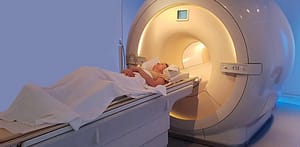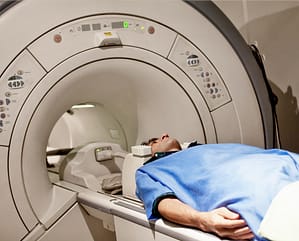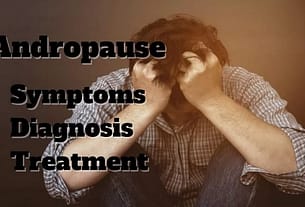Maybe you’ve just finished a few hours of work at the computer and now there’s a stabbing sensation between your shoulder blades. Or you have an ongoing, continuous ache that extends from the base of your neck down to the bottom of your ribs. What’s going on? And more importantly, how can you find some relief?
These are issues likely related to your thoracic spine, the section of your spinal column located in the upper and middle part of your back, where the bones in the vertebrae connect to the ribs, according to Justin Mullner, M.D., a sports medicine physician at Orlando Health Orthopedic Institute in Orlando, FL. You may also be experiencing problems with your muscles, ligaments, and nerves throughout the upper back.
And while low back pain is reported about twice as often as upper back pain, according to one research study, that doesn’t make the discomfort less valid if you’re the one feeling the pangs between your shoulder blades. “Upper back pain is not as widespread, but there can be discomfort and pain in this area from a range of different injuries or conditions,” notes Dr. Mullner. “Neck pain is also prevalent, especially due to technology use.”
Luckily, there are ways to ease the pain that don’t involve surgery or invasive treatments. Let’s look at some possible reasons your upper back may be giving you a problem, how to feel better now, and prevention strategies for the future.
The muscles in your upper back are connected to a range of tendons and nerves, and they also play a significant role in issues related to the rib cage and the organs in the front of the body, so it’s not always simple to assess what may be causing pain in this area, says Neel Anand, M.D., director of spine trauma at Cedars-Sinai Spine Center in Los Angeles.
“Diagnosis usually involves looking at factors like whether the pain is sharp or dull, how long it’s been going on, and if it worsens based on bending or twisting in different positions,” he adds. “In some cases, this may be referred pain, which means the problem is someplace else in the body, like in an organ, and that pain is radiating into the upper back as a result.”
In addition to pain, you may also feel other symptoms, including:
-
Burning sensation
-
Muscle stiffness
-
Numbness
-
Tingling
-
Weakness
Depending on your symptoms and their severity, these are some top possibilities for what may be prompting discomfort and pain in your upper back:
Ankylosing Spondylitis
Ankylosing spondylitis is a type of arthritis that often causes pain in the lower back but can come with symptoms anywhere along the spine due to inflammation. That can include the ribcage, with a feeling of tightness that makes it challenging or painful when you exhale.
Herniated Disc
When the jelly-like inner cushioning material between discs begins leaking out due to misalignment in the thoracic spine, the herniated disc can lead to pressure on the nerves in that region. The result can be numbness as well as pain, especially during movement.
Poor Posture
Poor posture, including a forward-head position that’s especially common when using technology like cell phones and computers, can lead to rounded shoulders, muscle tension and weakness, and overuse of muscles in the upper back. As a result, you may experience a dull ache or sharp, shooting pain that comes on when you adjust your posture.
Strains and Sprains
Strains, per the Cleveland Clinic, occur when there’s injury to a muscle or tendon, and a sprain is when you overstretch or tear a ligament. If either of those happen in the upper back, you’ll usually have pain that gets worse when you move, as well as decreased range of motion in the surrounding joints of the shoulders and neck, and muscle cramping or spasms.
Trauma and Injury
Like bones anywhere in the body, fractures that result from trauma and injury can cause pain, bruising, and discomfort. With the upper back, that trauma may come from a fracture in the spine itself, or it may originate from a broken rib.
Keep in mind that back pain may not be about your back specifically, Dr. Anand adds. For example, you may be experiencing pain due to a condition related to your lungs or heart, since those are within the ribcage. Issues that start in these organs, such as chronic obstructive pulmonary disease, may cause tightness in the surrounding muscles and that can lead to tension in the upper back, he says.
Diagnosing Upper Back Pain
In addition to assessing your symptoms and when they started, your doctor may order tests in order to pinpoint the cause of your upper back pain in case treatment will extend beyond lifestyle changes. According to Cleveland Clinic, those tests may include:

-
Computed tomography (CT) scan: This uses X-rays combined with a computer to create 3D images of the bones and soft tissues in the spine.
-
Electromyography: If you’re having numbness and tingling, that often means nerves are involved. This test checks for nerve damage in your spine.

-
Magnetic resonance imaging (MRI) scan: Using a magnet and radio waves, this test creates images or muscles, tendons, bones, and soft tissues that can detect abnormalities or injuries.
-
X-ray: If your doctor suspects you have a fracture in your spine or ribcage, this test will likely be used since it produces images of bones and can detect even hairline fractures.
“Tests like these are often used to rule out anything more serious,” says Dr. Mullner. “However, in many cases, upper back pain can be alleviated or even eliminated with some at-home treatments.”
At-Home Remedies for Upper Back Pain
Upper back pain can often be addressed by reducing inflammation caused by tight muscles, particularly if there’s no damage to bones, tendons, or ligaments, Dr. Mullner says. Some simple nonoperative, at-home remedies include:
-
Alternating rest periods with easy movement and stretches
-
Heating pad applied in short intervals to the upper back to reduce pain and stiffness
-
Ice pack applied, also in short sessions, to reduce swelling
-
Gentle massage
-
Over-the-counter pain medications such as acetaminophen and nonsteroidal anti-inflammatory drugs (NSAIDs) such as ibuprofen (Advil, Motrin) and naproxen (Aleve).
The World Health Organization notes that prescription pain medication shouldn’t be considered as a first-line treatment for any back pain, including both lower and upper back pain, since gentle movement and the use of heat and ice tend to work best for most people.
Exercises for Upper Back Pain
Physical activity can be used not only to address upper back pain, but also prevent it from happening in the first place. One meta-analysis of 16 studies found that regular exercise (strength training plus stretching or aerobic exercise) done 2 to 3 times a week reduced the risk of back pain by 33%.
“Exercise is absolutely a top choice for prevention when it comes to back issues because it strengthens the muscles of the back, improves range of motion, and improves bone density,” says Dr. Mullner.
If you already have pain, movement done at a slower pace and involves an ample degree of mindfulness is helpful, he adds. That includes yoga, tai chi, walking, and swimming. According to Tufts University Medical Center, some specific options include:
-
Arm and leg raise: Get down on your hands and knees in a tabletop position. Pull in your belly button and tighten your abdominal muscles to support your spine. While keeping your abdominals tight, raise one arm and the opposite leg away from you. Hold this position for 5 seconds. Lower your arm and leg slowly and change sides.
-
Scapular squeeze: While sitting or standing with your arms by your sides, squeeze your shoulder blades together and hold for 5 seconds.
-
Thoracic extension: Sit in a chair and clasp your hands behind your head. Gently arch backward and look up toward the ceiling.
-
Thoracic stretch: Sit on the floor with your legs out straight in front of you and hands placed on your thighs. Curl you head and neck toward your belly button. Hold for a count of 15.
The best exercise of all? The one you’ll continue doing, says Dr. Mullner. Consistency and frequency are more important than trying to choose the “perfect” exercise when it comes to strengthening your upper back and preventing pain.
When to See Your Doctor
In general, upper back pain that’s associated with muscle fatigue or poor posture should start to resolve within a few days with gentle movement, heat, icing, and strategic rest periods, says Dr. Anand.
If your pain comes on suddenly, however, or it begins after you’ve had an injury or trauma to the upper back, it’s best to get checked to rule out a fracture or soft tissue damage. Pain that’s worsening or involves numbness, tingling, or burning should also prompt a visit to your health provider since that may indicate there’s an issue that could involve your nerves, organs, or ribcage and may need more immediate medical attention.






